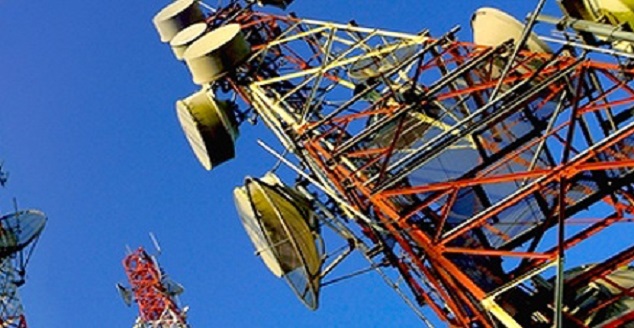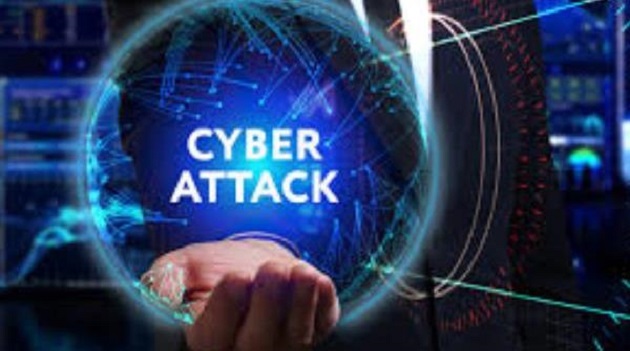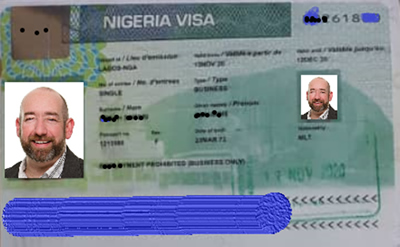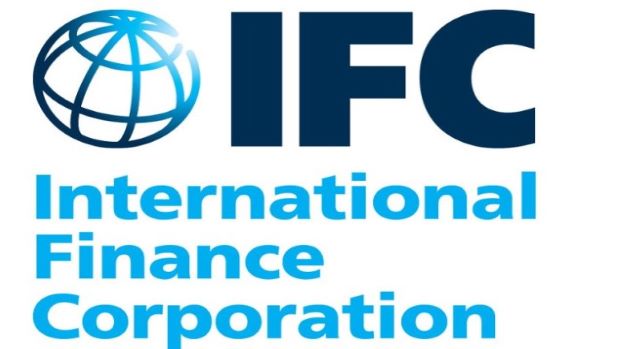General News
Unlicensed & Licensed Bands for Wireless Networks Expanding SATCOM Role in Booming Market

Andrew Aroh
5G brings three new aspects to the table: greater speed [to move more data]; Lower latency [to be more responsive]; higher capacity (the ability to connect a lot more smart devices and sensor at once).

There will be slow but responsive 5G.
There will be also fast 5G with limited coverage.
Spectrum-wise 5G runs in three kinds of airwaves: Low–Frequency bands networks; Mid–Frequency bands networks; and high–Frequency bands networks.
Low –Frequency bands 5G networks use existing cellular band and Wi-Fi band [5 GHz] by taking advantage of more flexible encoding using OFDM [better spectral efficiency, data reliability and effective range].The resulting bigger channel sizes thus created achieves speeds 25 to 50 percent better than 4G [2Gbps].
This yields about 3.5Gbps which is better than existing 54 Mbps for Wi-Fi.
These networks can cover the same distances using existing cellular networks and generally won’t need additional cell sites/Access points (AP).
Thus, even with existing macro cells 5G will be able to boost capacity by four times better than current systems by leveraging wide bandwidths and advanced antenna technologies [Multi beam with massive MIMO].
The goal is to have far higher speeds available and far higher capacity per sector, at far lower latency than 4G [20-30ms].
The standards bodies involved are aiming at 20Gbps speeds and 1ms Latency, at which point very interesting things begin to happen.
The first applications for 5G includes fixed wireless access for homes and enhanced mobile broadband [eMBB] services using new 5G phones, tablets, wireless access modems and HOTSPOTS.
High –speed wireless links tend to be deployed in conjunction with wireless access technologies, namely:
- LMDS/WLL base/earth stations
- Mobile Voice and Data base/earth stations
- Hotspot [Wi-Fi] base/earth stations
Hotspot access network is one in which wireless access is enabled by 802.11-based Wi-Fi technology.
This allows very high–speed roamable access to: Portable computers, PDAs, video games, services terminals of various types [e.g. IPAD], warehouse/industrial equipment, office computers, hand/personal wireless phones i.e. GMPCS (Global Mobile Personal Communications by Satellite).
Hotspots have been vigorously deployed to primarily serve the travelling business community with the current applications being corporate LAN access.
Hotels, airports, conferences centers, restaurant centers and shopping malls are the current deployment targets intended to serve these markets.
The low cost of the user terminals coupled with the pseudo-mobility of this technology will see it in wide spread HOME INDOOR and OUTDOOR deployments with virtually unlimited applications and services.
This technology has found its way into a merger of sorts with the existing mobile voice networks, providing much sort after integrated mobile voice & data networks with widespread ubiquitous coverage provided via satellite.
Larger Hotspots are constructed using a number of short range Access Points [APs] operating in unlicensed band allocations at 2.4, 5.2 or 5.8 GHz.
Each AP can provide access rates of 11Mbps or 54Mbps using highly standardization 802. 11a/b/g/n using COFDM technology for large and scalable Networks.
The Hotspots within a given metropolitan networks can then be linked using wire line/cable or wireless technologies.
Like other cellular networks, 5G networks use a system of Cell Sites/APs that divide their territory into sectors and send encoded data [using OFDM] through radio waves. Each site must be connected to a network backbone. High speed wireless links operating above 50Mbps can be operated in unlicensed bands or licensed bands depending upon the services and perceived interference immunity of the links, whether through a wired or wireless backhaul connection.
- When considering, wireless inter Hotspot, links, the use of unlicensed technology is attractive since the entire 802.11 user access layer is unlicensed.
- However, once aggregation in the Hotspot has occurred, the interference prone nature of the unlicensed bands makes them unstable choices for backhaul except for bands like 24GHz and 60GHz in which there is a high degree of natural or regulated interference immunity.
- As a result, the aggregation of the data from these access cells tend to be focused on high-speed, highly reliable and predictable links constructed using fiber [If available] or licensed high-speed wireless using satellite technology or microwave links. Frequencies such as 18, 23, 26 and 28 GHz are often candidates for these licensed links. Care must be taken when considering unlicensed operation in the 5.8GHz band since this band is highly prone to interference .The 24 GHZ allocation does allow only highly directive PTP links and 60 GHz offers very highly natural attenuation against undesired interferences. Ultimately, the best reliability and predictability are offered by licensed links.
- 5G over satellite catches on much faster than unexpected:
- Satellite must be inserted into the global virtualized architecture
- Industrial companies have demonstrated the use of satellite communications capabilities integrated and interoperable in the 5G environment, achieve interoperability of networks and demonstrate the functionality, performance and benefits brought by the use of satellite. The first phase leveraged existing space and ground segment assets and new development enables the high efficiency, high performance, virtualization and multi service capability paramount for the main 5G use cases.
- These activities drives the full integration of satellite in 5G through open and standard solutions, facilitated primarily through 3GPP standardization.
SATELLITE PROVIDERS LOOK TO EXPAND ROLE IN BOOMING Wi-Fi MARKET:
- Increasing demand for broadband internet access anytime, anywhere is what is fueling the growth of Wifi services.
- Satellite services providers are moving into the booming market for wireless communications by offering satellite links for Wi-Fi [Short for Wireless Fidelity] hot-spots.
- The market is substantial as Wi-Fi hot-spots continue to pop up in office buildings and other public and private venues around the world. Indeed, both satellite and terrestrial service providers are competing to offer the services.
- Just as satellite backhaul has helped expand the reach of mobile telephone networks, it can also expand Wi-Fi access.
- Rural markets in developed countries, such as France, as well as those in less developed area in Africa, are being brought across the digital divide because of such access.
- A particularly interesting satellite application in the U.S.A is to connect temporary Wi-Fi hot-spots used for sporting events and natural disaster relief.
Broadband wireless software and network providers have found that satellite networking can work better than terrestrial lines to connect wide area Wi-Fi hot-spot networks.
Installing a nationwide-network with terrestrial links [Lines] involves complexities that can include the use of multiple vendors, long lead lines, and multiple points of contact for repairs.
Satellite network uses a single vendor.
- A strategic partner and value added reseller can provide an internet portal for truckers with Wi-Fi hot spots at more than 250 truck shops. It can also offer software solutions and a satellite network capable of transmitting data at up to 48 megabits per second.
- When drivers or any other subscribers are in a hot-spot, they have access to a proprietary network that can transmit application data, access the internet and intranets, as well as send and receive-email.
- To enhance cost-effectiveness of its system, service partners can design their networks around hotspot access locations that will be located strategically across the country.
- Wi-fi hotspots provide an excellent avenue for satellite systems to provide broadband access even with traditional-distribution satellites.
Andrew Aroh is President SSPI Nigeria
General News
Over 250,000 Cyberattacks Disguised as Anime – Report

From Naruto to Attack on Titan, cybercriminals are increasingly using anime and other Gen Z favourites as bait. In a new report covering Q2 2024 – Q1 2025, Kaspersky has found over 250,000 cyberattacks disguised as popular anime among other shows and streaming platforms favoured by a younger audience.

To help Gen Z recognise these and other cyber risks, Kaspersky is launching “Case 404” — an interactive cybersecurity game, teaching how to protect their digital lives.
For many members of Generation Z, streaming is more than a pastime, it’s a way of life that provides connection to the characters, worlds and fandoms that define their identity.
From anime to nostalgia-fueled movie marathons, Gen Z’s connection to on-screen worlds runs deep. This unique attachment creates a security paradox: the more emotionally invested the viewer, the easier it is to trick them, and Gen Z’s enthusiasm is proving dangerously exploitable.
This is extremely evident in anime culture. Over 65% of Gen Z regularly watch anime, making them the most anime-engaged generation in history. For our analysis, Kaspersky’s experts selected five popular anime titles among Gen Z: Naruto, One Piece, Demon Slayer, Attack on Titan and Jujutsu Kaisen.
Kaspersky found 251,931 attempts to deliver malware or unwanted files disguised under the names of these anime titles. Cybercriminals are tapping into the trust and affection Gen Z has for these series, often using bait like “exclusive episodes”, “leaked scenes”, or “premium access”.
Among anime titles, Naruto took the top spot, despite first airing more than two decades ago. Over the reported period, it was used as bait in 114,216 attempted attacks. Demon Slayer followed with 44,200 attack attempts.
Its meteoric rise in recent years, amplified by viral moments and a growing global fanbase, made it a natural target for cybercriminals looking to ride the wave of hype. Meanwhile, Attack on Titan — a long-standing favourite — ranked third with 39,433 detected attempts to distribute malicious content.
Apart from anime, Kaspersky also analysed five iconic films and series that continue to resonate with Gen Z: Shrek, Stranger Things, Twilight, Inside Out 2, and Deadpool & Wolverine.
These films and shows alone accounted for 43,302 attack attempts with a pronounced spike in attention to these titles from cybercriminals at the beginning of 2025. This is primarily connected to the rise of attacks on Shrek, with over 36,000 attempts in total and a sharp spike in March 2025, double the monthly average for 2024.
Platforms like Netflix, Amazon Prime Video, Disney+, Apple TV Plus and HBO Max have reshaped movies, series, and anime watching into an immersive, on-demand experience that caters to Gen Z’s love of personalised content and global storytelling. However, this has also created fertile ground for cybercriminals.
Kaspersky detected 96,288 attempts to distribute malicious or unwanted files disguised as the names of these major streaming platforms. Unlike seasonal trends, streaming platforms offer a continuous flow of content, from highly anticipated premieres to hidden gems that viewers discover months or even years after release.
When examining which streaming services were most frequently used by cybercriminals, Netflix stood out by far, involved in 85,679 attack attempts and associated with over 2.8 million phishing pages imitating its branding.
Cybercriminals take advantage of the constant traffic, broad global reach, and frequent subscription-based activity. They mimic login pages, share “free trial” links, or spoof password reset emails with full knowledge of how central Netflix is to Gen Z’s digital routine.
As Gen Z’s daily life becomes inseparable from streaming platforms, fandom spaces, and social media communities, cyberthreats evolve to mirror their interests. To meet this challenge, Kaspersky has launched an interactive online game, “Case 404”, designed specifically for Gen Z. “Case 404” invites players to become cyber-detectives and solve immersive cybercrime cases.
Through this digital adventure, Kaspersky is not just highlighting risks but empowering Gen Z to develop their mindset and skillset to stay safe in an increasingly vulnerable online world. As a reward for completing the game, participants receive a discount on Kaspersky Premium, giving them trusted tools they need to navigate the digital world safely.
“As the world of entertainment continues to evolve, so do the tactics used by cybercriminals to exploit popular content, whether through fake downloads or fraudulent merchandise offers.
“From beloved anime like Naruto and Demon Slayer to the latest blockbusters like Inside Out 2, scammers have found new ways to take advantage of Gen Z’s affinity for digital culture and streaming platforms. With the rise of these cyberthreats, it’s more important than ever for young users to stay vigilant and understand how to protect themselves online,” comments Vasily Kolesnikov, security expert at Kaspersky.
General News
Nigerians, Others Lost $70m to Denied Visas Applications to Europe in 2024

In total, African countries lost 60 million euros in rejected Schengen visa fees in 2024, analysis from the LAGO Collective has shown.

According to CNN, when Joel Anyaegbu’s application for a Schengen visa to travel to Barcelona was denied late last year, he was surprised but immediately reapplied.
He sent in more documents than were required, including bank statements and proof of property ownership in Nigeria.
He was rejected again.
“The information submitted regarding the justification for the purpose and conditions of the intended stay were not reliable,” read a checklist returned with his passport from the Spanish consulate in Lagos. The 32-year-old gaming consultant said he felt humiliated.
“I had to cancel meetings with partners at the conference I was attending,” he told CNN.
“I emailed the embassy to understand why I was denied but it has not been answered to date.”
Anyaegbu’s was among the 50,376 short-stay Schengen visa applications rejected in Nigeria last year, nearly half of all submissions, according to newly released data from the European Commission.
Applicants worldwide pay a non-refundable visa fee of 90 euros (about $100), so Nigerians alone lost over 4.5 million euros (about $5 million) seeking permission to travel to the 29 European countries that make up the Schengen Area.
In total, African countries lost 60 million euros ($67.5 million) in rejected Schengen visa fees in 2024, analysis from the LAGO Collective showed.
The London-based research and arts organization has been monitoring data on European short-term visas since 2022 and said Africa is the continent worst affected by the cost of visa rejections.
“The poorest countries in the world pay the richest countries in the world money for not getting visas,” its founder Marta Foresti told CNN.
“As in 2023, the poorer the country of application, the higher the rejection rates. African countries are disproportionately affected with rejection rates as high as 40-50% for countries like Ghana, Senegal and Nigeria.”
She says this proves “inbuilt discrimination and bias” in the process.
A European Commission spokesperson told CNN that member states consider visa applications on a case-by-case basis.
“Each file is assessed by experienced decision-makers on its own merits, in particular regarding the purpose of stay, sufficient means of subsistence, and the applicants’ will to return to their country of residence after a visit to the EU,” the spokesperson said via email.
Africans have long complained about inconsistent, sometimes baffling decisions about who gets approved or denied while applying for European visas.
Cameroonian Jean Mboulé was born in France but when he applied for a visa in 2022 alongside his wife using similar documents, his application was rejected but hers was not.
“At the time she was unemployed but with a South African passport. She had no income but received a visa on the back of my financial statement,” he told CNN.
“But the embassy said they refused my application because my documents were fake, and they weren’t sure I would come back to South Africa, where I am a permanent resident, if I went to France.”
The 39-year-old regional executive took legal action in French courts and won, forcing the French embassy in Johannesburg to grant his visa and pay him a fine of 1,200 euros.
He told an administrative tribunal in the French city of Nantes that the embassy’s decision to deny him a visa was “tainted by insufficient reasoning.”
Mboulé pointed out that he had provided sufficient guarantees that he would return at the end of his trip to his wife and daughter in South Africa where he owns a building. After he got the visa, he chose to go to Mauritius instead as he didn’t want to spend his money in France.
The EU said its member states consider visa applications on a case-by-case basis.
The Cameroonian’s case is unique as many Africans denied Schengen visas rarely appeal or contest the decisions in court.
Like Anyaegbu, the Nigerian gaming consultant, they often reapply, losing more money in the process.
Mboulé has travelled several times to the UK and other African countries but was still denied twice for Schengen.
“The financial cost of rejected visas is just staggering; you can think of them as ‘reverse remittances,’ money flowing from poor to rich countries, which we never hear about,” the LAGO Collective’s Foresti says.
Schengen visa fees increased from 80 to 90 euros in July 2024, making it even more expensive for the world’s poorest applicants.
But South African management lecturer Sikhumbuzo Maisela said the visa rejection rates for Africans were lower than he expected.
“The visa vetting process seems to be shaped less by outright prejudice and more by historical patterns of behaviour,” he told CNN via email.
“Western countries have had instances where visa holders overstayed or violated terms, and this has influenced how future applications are scrutinized.”
General News
IFC, Standard Chartered Expand Lending in Local Currencies

IFC, a member of the World Bank Group, has partnered with Standard Chartered to bolster local currency financing for private enterprises in emerging markets.

Standard Chartered will provide local currency loans to IFC in selected markets, which IFC will subsequently on-lend to private-sector projects.
The inaugural transaction under this collaboration is a loan of 9 billion Kenyan shillings (equivalent to approximately 70 million US dollars) to IFC, which will support the advancement of digital infrastructure in Kenya.
“With exchange rate volatility and rising debt pressures the need for local currency financing in emerging markets has become increasingly evident. When businesses borrow in the same currency as their revenues, they can concentrate on growth instead of exchange rate fluctuations,” said John Gandolfo, IFC Vice President and Treasurer, Treasury & Mobilization. “As we increase our local currency financing abilities, we plan to replicate this facility in other currencies across the globe.”
Sunil Kaushal, Global Co-Head, Corporate & Investment Banking, and CEO, ASEAN and South Asia markets, Standard Chartered said: “This landmark transaction in Kenya reflects our commitment to supporting financial resilience in local markets.
By partnering with IFC, we’re delivering local currency solutions that help corporates in emerging markets manage currency volatility and access the long-term capital they need to grow. With our deep roots and liquidity access across emerging markets, we are well positioned to scale this initiative and enable more businesses to access stable financing options.”
Kariuki Ngari, Managing Director and Chief Executive Officer, Kenya and Africa, Standard Chartered said: “This partnership represents a pivotal step forward in enhancing Africa’s financial resilience. By facilitating local currency financing, we not only address one of the most significant challenges facing the businesses across the continent – exchange rate vitality – but also open up new avenues for long term economic growth.
Kenya’s digital infrastructure sector is particularly well positioned to benefit from this inaugural transaction, setting the stage for scalable and sustainable financing solutions. These models will drive economic growth and empower local enterprises supporting prosperity across Africa.”
Exchange rate volatility presents a risk for companies that borrow in hard currency, such as the US dollar, but get paid in local currency.
Many local companies in emerging markets lack the capacity to effectively manage these currency risks. Therefore, securing local currency financing at competitive rates with flexible features is increasingly important to meet the growing need for diverse financing options among local companies.
IFC has increased its collaboration with global, regional and local banks to provide more local currency financing to clients. The organization has offered local currency products—such as loans and bonds, structured finance products, and risk-management solutions since the early 1990s.
Between FY15 and FY24, IFC committed local currency senior debt financing of over $30 billion US dollars in 67 local currencies through loans and bonds, structured products, and risk-management solutions.

 Telecom2 days ago
Telecom2 days agoTelcos Warn of Nationwide Telecom Blackout over Diesel Shortage

 E-Financial2 days ago
E-Financial2 days agoCBN, SEC Fine Access Holdings N1.21Bn for Infractions

 Telecom2 days ago
Telecom2 days agoNigerians Spend N5.3 Trillion on Telecom Services

 News2 days ago
News2 days agoKaspersky Uncovers Dero Crypto Miner Spreading via Exposed Container Environments

 E-Financial2 days ago
E-Financial2 days agoFirst Asset Management Launches N100 Billion Infrastructure Fund to Provide Sustainable Capital for Infrastructural Development Across Sectors

 Telecom2 days ago
Telecom2 days ago13 New Things Google Launched at I/O 2025

 Broadcasting2 days ago
Broadcasting2 days agoCanal+ Buyout Of South Africa’s MultiChoice one Step Closer

 General News2 days ago
General News2 days agoNigerians, Others Lost $70m to Denied Visas Applications to Europe in 2024
















